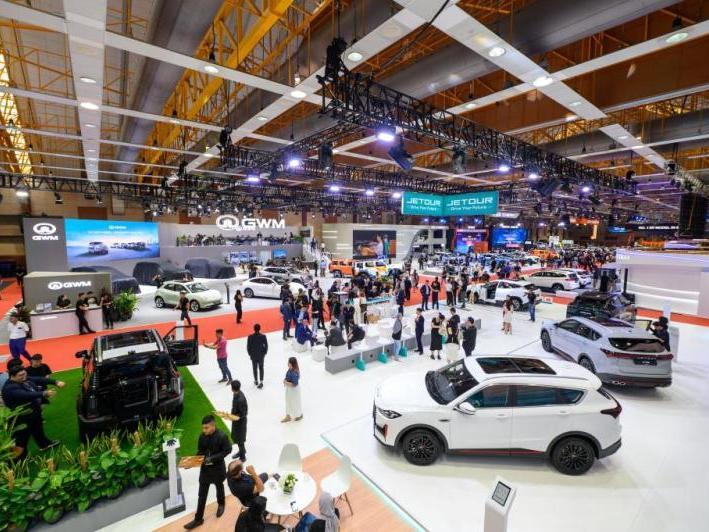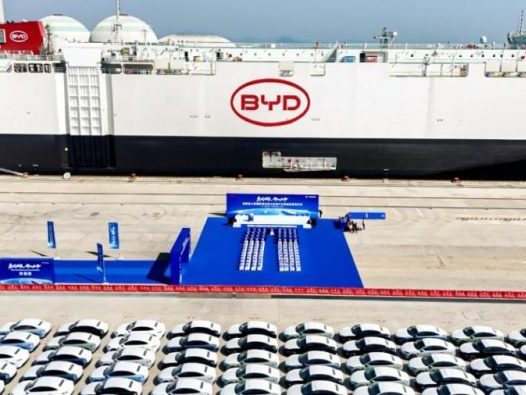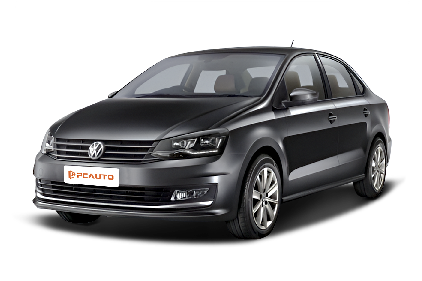Q
Is Vento 2018 high maintenance?
The 2018 Volkswagen Vento falls into the mid-range when it comes to maintenance costs in the Malaysian market. How much you'll spend on upkeep really depends on the car's age, mileage, and how you drive it day-to-day. Routine services like oil changes and filter replacements are pretty much on par with other cars in its class. Parts availability is generally good locally, though some electronic components or special accessories might need to be ordered in advance. Sticking to the manufacturer's recommended service schedule is definitely smart to keep long-term repair risks low.
If you're looking to trim costs a bit, reputable third-party workshops are worth considering—but make sure they use parts that meet the proper specs. Also, keeping an eye on your suspension and gearbox condition with regular checks can help catch potential issues before they get worse. Malaysia's hot and rainy weather takes a toll on rubber components and cooling systems, so it's a good idea to shorten the inspection intervals for those parts. If you're buying a used Vento, shelling out for a professional inspection to check the engine condition and rust proofing is money well spent—it'll save you from nasty surprise bills down the line.
Overall, as long as you keep up with regular maintenance and go through proper service channels, the 2018 Vento shouldn't hit you with sky-high maintenance costs. Its durability is right there with other mainstream compact sedans.
Special Disclaimer: This content is published by users and does not represent the views or position of PCauto.
Related Q&A
Q
Is the Volkswagen Vento 2018 expensive to maintain?
The 2018 Volkswagen Vento falls into the upper-middle range when it comes to maintenance costs in Malaysia. The actual figures depend on how you drive and what services you need, but you're looking at roughly RM400 to RM600 for standard stuff like an oil change and filter replacements. For more major services – think transmission fluid swaps or brake system overhauls – you could be shelling out anywhere from RM800 to RM1200.
Compared to Japanese models like the Toyota Vios or Honda City, the Vento does cost a bit more in parts and labor. That's mainly down to Volkswagen being a German brand; some components have to be imported, which bumps up the price tag. But hey, you do get that solid German driving feel and some pretty decent safety kit for the class, which counts for something.
If you keep up with regular servicing at authorized VW centers and stick to the manufacturer's recommended maintenance schedule, you can definitely keep those long-term repair gremlins at bay. And let's not forget Malaysia's hot and humid climate – make sure you're checking the cooling system and AC filter regularly. It'll help keep the car running smoother for longer.
So yeah, the Vento isn't the cheapest to maintain, but with a bit of budget planning and choosing a reliable workshop, you can keep those costs manageable.
Q
What is the service cost of a Volkswagen Vento 2018?
For the 2018 Volkswagen Vento in Malaysia, routine maintenance costs typically range from RM300 to RM600. The exact figure depends on the specific services needed—think oil changes, filter replacements, that sort of thing—and how each authorized service center prices their work. Your best bet is to check Volkswagen Malaysia’s official website or swing by your local dealer to get the latest quotes.
It’s no secret that German cars usually cost a bit more to maintain than their Japanese counterparts, but that’s often down to the precision engineering and high-quality components they use.
Sticking to regular maintenance isn’t just about keeping your car running longer; it also helps preserve its resale value, especially for a model like the Vento that’s all about driving feel. If you’re looking to cut costs, Malaysian owners can opt for third-party certified workshops, but make sure they’re using original or equivalent-quality parts to avoid voiding any warranty coverage. And if you’re on a tight budget, focus on the essential basics first—but don’t skimp on replacing critical fluids like transmission oil or brake fluid when they’re due.
Q
How reliable is the Volkswagen Vento 2018?
The 2018 Volkswagen Vento has proven to be a generally reliable workhorse in the Malaysian market. Under the hood, you'll find a 1.6-liter naturally aspirated engine paired with a 6-speed automatic gearbox – a powertrain combo that's been market-tested over the years. Maintenance costs are pretty reasonable, and parts availability isn't an issue, making it a solid pick for daily commuting duties.
Owner feedback highlights its frugal fuel economy, typically returning around 12-14km/L in the city, and a relatively trouble-free electronics package. However, it's wise to keep an eye on chassis components like suspension bushings; the tropical climate here can speed up rubber part degradation, so regular checks are a good idea.
A quick note for fellow German car owners in Malaysia: stick to the maintenance schedule religiously. VW recommends servicing every 10,000km or 6 months, whichever comes first, and using oil that meets the VW 50200 specification – this will help keep that engine running strong for the long haul.
If you're scouting the used market, pay extra attention to the air conditioning system's cooling performance (a must in our heat!) and, if it's a TSI variant with DSG, test the gearbox for smooth shifts. These are biggies for tropical driving.
All in all, with proper and timely maintenance, the 2018 Vento handles family runabouts capably. Resale value sits somewhere in the middle of the pack for its class – not a standout, but not a disappointment either.
Q
Does the 2018 Vento have LED tail lights?
So, the 2018 Volkswagen Vento in Malaysia did come with LED taillights on some of the higher-spec trims. Those LEDs definitely step up the game when it comes to visibility and safety after dark. But hey, don't expect them on the base models – those probably still stick with good old halogen bulbs. So, if you're checking one out, you'll want to confirm the exact specs based on the specific variant.
LEDs are pretty much the standard these days for a reason, right? They last longer, sip less juice, and light up quicker than halogens. For Malaysian buyers, whether you're hunting for a used Vento or a brand-new one, I'd strongly suggest either checking the car in person or having a chat with the dealer to nail down the lighting setup. While you're at it, might as well ask about other handy features like auto headlights or dynamic turn signals – they could be available too.
And let's not forget, the rise of LED tech has given car lighting systems a general upgrade across the board. Think daytime running lights, fog lights – all those little details that not only add a bit more techy flair to the car but also make driving safer.
Q
What colors was the Volkswagen Vento available in for 2018?
The 2018 Volkswagen Vento hit the Malaysian market with a solid lineup of classic, practical color options. Think Pure White, Deep Black, Reflex Silver, and Tornado Red – shades that not only align with local tastes but also hold up well to daily use, hiding dirt and weathering like pros. As a compact sedan focused on value, the Vento’s color palette strikes a nice balance between steady and modern, making it a solid pick for families and younger drivers alike.
When picking a color here, Malaysia’s climate plays a big role. Lighter hues like white and silver are smart choices – they reflect sunlight better, keeping that cabin from turning into an oven. Darker colors, though? They bring a sleek, premium vibe and are super easy to pair with aftermarket mods if that’s your thing.
Volkswagen didn’t skimp on paint quality either. They used high-grade coating tech, so the colors stay vibrant longer and stand up to whatever the tropical climate throws at them – corrosion included. Knowing your options and what each brings to the table can help you make a smarter call, whether you’re going with personal preference or practical needs. Plus, it’ll help you keep your Vento looking sharp for years to come.
Q
What is the boot space capacity of the Volkswagen Vento?
The Volkswagen Vento provides a trunk capacity of 494 liters, which is generally sufficient for the daily needs of most families, including grocery shopping, travel, and carrying larger items. This places its cargo volume in the mid-to-upper range for its vehicle class, aligning well with Malaysian consumers' emphasis on practicality.
A notable feature is the trunk's wide opening, which facilitates easy loading and unloading of bulky objects. Although the rear seats do not fold down, limiting flexibility for transporting very long items, the 494-liter capacity itself is adequate for a variety of everyday needs, such as supermarket shopping or luggage for a family trip.
For Malaysian buyers considering a compact sedan, trunk space is an important consideration, and the Vento's 494-liter capacity is a significant attribute in this regard. Combined with its fuel efficiency and reliability—characteristics well-suited to local road conditions and usage habits—it is recommended to visit a dealership to personally evaluate the space and determine how well it meets your specific requirements.
Q
What is the fuel economy of the Volkswagen Vento 2018?
The 2018 Volkswagen Vento delivers solid fuel efficiency in the Malaysian market. Its 1.6-liter MPI naturally aspirated engine paired with a 6-speed automatic transmission returns an official combined fuel consumption figure of around 6.2 liters per 100 kilometers – that's roughly 16 kilometers per liter. This holds up pretty well for real-world use, blending city commutes with highway stretches.
Volkswagen's refined engine tuning, including multi-point fuel injection, plus the car's lightweight construction, are key to its efficient performance. It aligns nicely with Malaysian drivers' focus on everyday running costs. Now, it's worth keeping in mind that actual fuel economy can vary based on driving style, road conditions, and how well the car's maintained. Sticking to regular servicing and adopting a smooth driving approach will help you get the most out of every drop.
In its class, the Vento's fuel efficiency sits right in the mix with its Japanese rivals, showcasing German engineering's ability to balance power and frugality. For Malaysian buyers watching their budget and keeping an eye on ownership costs, this makes the Vento a compelling option to consider.
Q
What are the engine specifications of the Volkswagen Vento 2018?
The 2018 Volkswagen Vento in Malaysia comes packing a 1.6-liter MPI naturally aspirated four-cylinder petrol engine. It cranks out approximately 110 horsepower (82 kW) at 5,800 rpm and hits peak torque of 153 Nm at 3,800 rpm, all mated to a 6-speed automatic gearbox. This powertrain is all about smoothness and fuel efficiency, making it a solid fit for city driving.
Under the hood, the Vento uses multi-point injection rather than the more advanced direct injection setup. But here's the upside: it's cheaper to maintain and plays nicer with whatever fuel quality you throw at it – perfect for Malaysia's roads and fuel conditions, let's be real.
Now, naturally aspirated engines like this one deliver power in a nice, linear way, which is smooth. But yeah, compared to a turbo, you do feel a bit less punch down low in the revs. The trade-off? Simpler, more reliable mechanicals that should stand the test of time better over the long haul.
Volkswagen did a solid job tuning this engine too. It handles Malaysia's hot and sticky tropical weather without breaking a sweat in the cooling department, and back then, it met Euro 4 emissions standards – showing VW knows its way around engine calibration.
For shoppers on a budget who still want that German driving feel, the Vento strikes a good balance. It's got you covered for daily commuting, and you still get that reassuringly planted German chassis that makes the drive feel more refined than your average runabout.
Q
What is the resale value of a Volkswagen Vento?
In Malaysia, the used car residual value of the Volkswagen Vento is significantly influenced by factors such as age, mileage, condition, and market demand. Typically, a 3-year-old Vento retains around 50%-60% of its original value, while a 5-year-old model might drop to approximately 40%. The specific figure really hinges on factors like regular service records and whether it's still within the original factory warranty period. As an entry-level German sedan, the Vento's 1.6L MPI engine paired with a 6-speed automatic gearbox has built up a decent reputation for durability in the local market. Coupled with Volkswagen's brand recognition, its residual value tends to outperform some competitors in the same segment. It's worth noting that the Malaysian used car market is quite sensitive to the maintenance costs of German cars' electronic systems, so sellers are advised to provide complete service records to potentially boost the selling price. If you're considering holding onto it for the long term, opting for a VW Approved Used Car (Volkswagen's certified pre-owned program) can get you additional warranty coverage, which positively impacts the resale value down the line. Other factors affecting residual value include body color – silver or white are more preferred locally – trim level (the Highline trim generally holds value better), and accident history. Before selling, it's a good idea to check instant valuation references on Malaysian used car platforms like Carsome or MyTukar.
Q
Is 2018 Vento 3 cylinder or 4 cylinder?
The 2018 Vento comes with a 1.6-liter MPI four-cylinder naturally aspirated engine – a familiar workhorse in the Malaysian market, loved by many owners for its rock-solid reliability and fuel-sipping nature. Four-cylinder engines typically run smoother and vibrate less than their three-cylinder counterparts, especially shining during highway cruises, which makes them a great fit for Malaysia's long-distance driving needs. As an affordable family sedan, the Vento's powertrain strikes a nice balance between daily commuting practicality and family use, with the 1.6-liter displacement packing enough punch to handle the country's hilly terrain. It's worth remembering, though, that cylinder count is just one piece of the puzzle – buyers should also weigh factors like transmission pairing, chassis tuning, and after-sales service for the full picture. Malaysia's hot and rainy climate does put some demands on engine cooling systems and durability, so regular maintenance is key to keeping that four-cylinder engine performing at its best.
Latest Q&A
Q
Is the 2020 RAV4 AWD?
The 2020 Toyota RAV4 does offer AWD (All-Wheel Drive) versions, though the specific configuration depends on the trim level and powertrain chosen. It comes equipped with the Dynamic Torque Control AWD system, which automatically distributes torque between the front and rear wheels under different road conditions, enhancing stability on wet surfaces or during light off-roading. Some models even feature Multi-Terrain Select modes to further boost passability. It's important to note that the RAV4's AWD system is primarily designed for city driving and occasional unpaved roads, not the hardcore four-wheel drive systems found in professional off-road vehicles. If you frequently need to tackle complex terrain, it's advisable to consider models with more advanced four-wheel drive systems. Additionally, AWD versions will have slightly higher fuel consumption than front-wheel drive models, so it's worth weighing your daily usage scenarios before making a purchase decision.
Q
How many miles is a 2020 RAV4 good for?
The 2020 Toyota RAV4 can typically hit 200,000 to 300,000 miles (around 320,000 to 480,000 kilometers) with proper care and maintenance. The actual mileage really depends on driving habits, road conditions, and how often you keep up with servicing. That 2.5-liter four-cylinder engine and hybrid setup are known for being solid reliable units – staying on top of oil changes, transmission fluid swaps, and brake checks will definitely help it go the distance. The RAV4's chassis and suspension are pretty tough too, handling our local patchy road conditions without breaking a sweat. If you want to stretch its lifespan even more, try to lay off the constant hard acceleration and sudden braking, and keep an eye on tire and battery health regularly. A lot of owners say even after 150,000 miles (about 240,000 kilometers), the thing still runs strong – that's part of why Toyotas stay popular for so long. If you're looking at a used RAV4, make sure to check out the full service history and a vehicle history report to avoid any major accident or mechanical headaches.
Q
Is the 2020 RAV4 good in the snow?
The 2020 RAV4 handles pretty well in the snow, and that's mostly thanks to its standard Dynamic Torque Vectoring AWD system. This system smartly distributes torque between the front and rear wheels, as well as between the left and right rear wheels, which really boosts grip on slippery surfaces. Then there's the Multi-Terrain Select system with a Snow mode, which fine-tunes the throttle response and shift logic even more. On top of that, the decent ground clearance (about 8.6 inches) and solid body rigidity improve its capability. Even though we don't get much snow around here, that 4WD tech still comes in handy for muddy roads after heavy rains or rough terrain. And if you ever take a road trip to a cold area, the RAV4's snow performance is a nice bonus. Just a heads-up, though—for the best snow driving, you'll want to pair it with winter tires. Day to day, the AWD system also actually helps with handling on wet roads.
Q
Is there a recall on the 2020 RAV4?
Yes, the 2020 Toyota RAV4 did have a global recall over some issues. The main problems were fuel pump failures and hybrid system wiring harness issues, which could lead to stalling while driving or short-circuit risks. Owners can check if their vehicle is part of the recall through Toyota's official channels. It's a good idea to regularly check Toyota's official website or contact your local authorized dealer for the latest recall info. Also, get into the habit of reviewing your vehicle's maintenance records regularly to keep driving safe. Other model years or RAV4 variants might have had recalls for different technical problems too. So no matter what vehicle you drive, staying on top of recall notices and getting repairs done promptly is a key step in keeping safe on the road. If you're not sure if your vehicle is affected, provide your Vehicle Identification Number (VIN) to the dealer and they'll help you out professionally.
Q
What are the negatives of a RAV4?
While the Toyota RAV4 is a popular SUV, there are some drawbacks worth noting. For instance, the third-row seating is rather cramped, which might not be comfortable enough for families who frequently need to carry multiple passengers. Additionally, the hybrid version's trunk space is slightly reduced due to battery placement, impacting storage convenience. In terms of driving experience, some users report that the suspension tuning is on the stiffer side, especially compromising comfort on uneven roads. The sound insulation also leaves room for improvement, with noticeable wind and tire noise at highway speeds. Tech-wise, the entry-level trim's infotainment system has relatively basic features, and even the higher trims' touchscreens could use better responsiveness. It's worth mentioning that while RAV4's maintenance costs are reasonable, they're still higher than some competitors, particularly the regular upkeep expenses for the hybrid system. For consumers considering this vehicle, it's advisable to test the rear-seat space and trunk capacity to see if they meet your needs. Also, comparing NVH performance and after-sales policies with other同级 models is a good idea. The hybrid version suits those prioritizing fuel efficiency but requires weighing the battery maintenance costs.
View MoreRelated News

Because of lack of funds to upgrade the factory, Volkswagen postponed the release of ID.Golf and ID.Roc
JamesSep 17, 2025

Volkswagen Locks Vehicle Horsepower, Unlocks Full Power via Subscription
JohnAug 19, 2025

Summarizing the 2025 Malaysia Auto Show, a large number of new cars were launched in Malaysia this year.
MichaelMay 12, 2025

Volkswagen ID.Buzz's Bizarre Recall: Third-Row Seats Too Wide, Need to Be Modified
Kevin WongMay 8, 2025

BYD Sets Global Sales Target of 5.5 Million Units for 2025
RobertMar 26, 2025
View More


















Pros
Cons